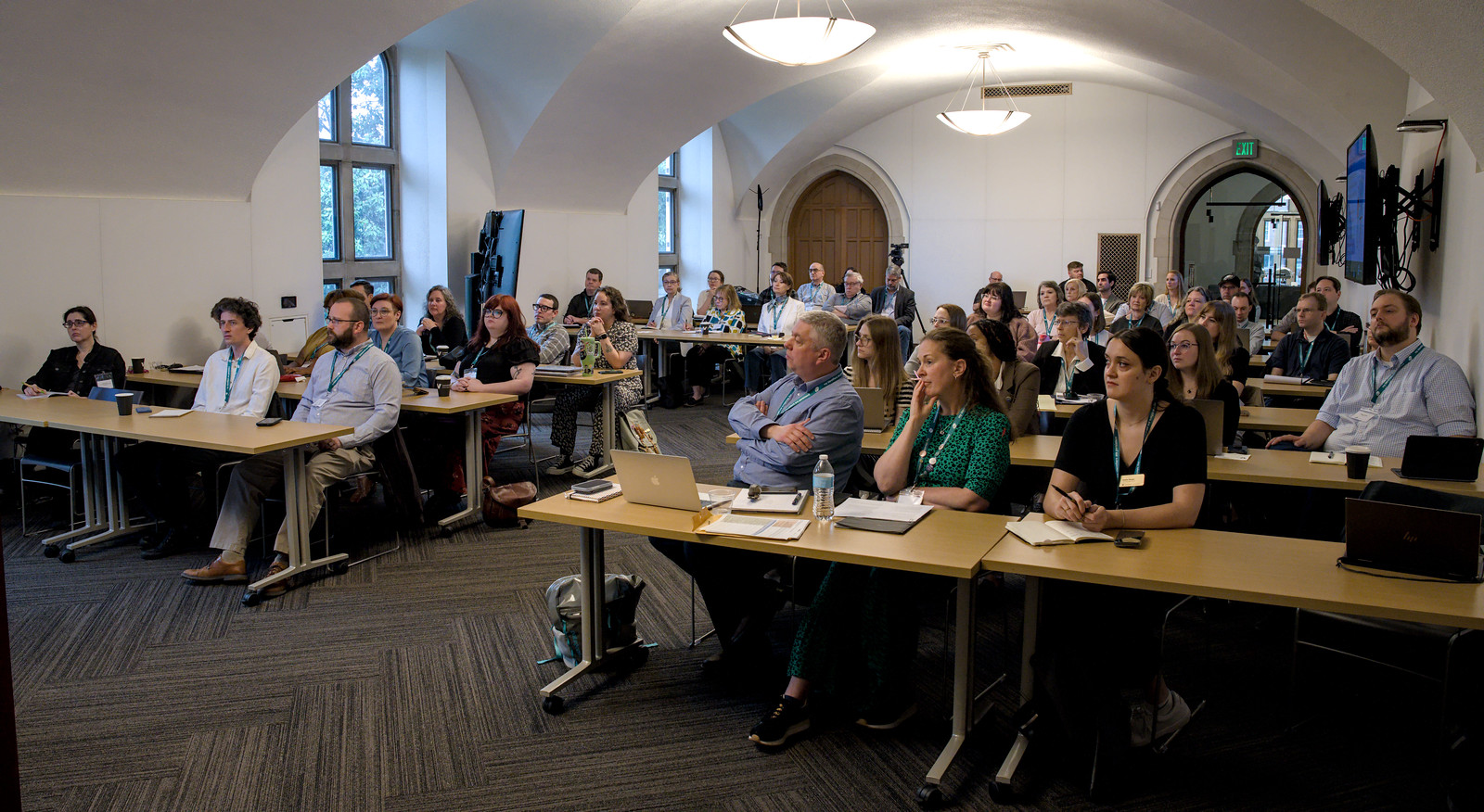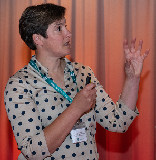Blog
Unless otherwise stated, content is shared under CC-BY-NC Licence
A Snapshot of IIIF 2025: Key Takeaways from the Annual Conference
Sebastiaan Schoonebeek is Digital Collections Team Software Developer at University of York. He attended the IIIF Annual Conference Archiving with support from the DPC Career Development Fund, which is funded by DPC Supporters.
This year’s International Image Interoperability Framework (IIIF) Annual Conference at the University of Leeds brought together a vibrant community of researchers, developers, and digital preservation practitioners. Over three packed days, institutions from around the world shared their work with IIIF and related technologies.
Exploring Non-Traditional Imaging at IS&T Archiving 2025
Geoffrey Schilling is Digital Production Technician at University of Arizona Libraries. He recently attended the IS&T Archiving Conference with support from the DPC Career Development Fund, which is funded by DPC Supporters.
Through a grant provided by the Digital Preservation Coalition’s Career Development Fund, I was fortunate enough to be given the opportunity to attend the IS&T Archiving 2025 conference in Granada, Spain. This year’s conference location was just down the hill from the breathtaking Alhambra and Generalife at the University of Granada’s Escuela Técnica Superior de Arquitectura.
Digital Preservation at the National Museum of Australia: Introducing the Changeable and Digital Team
This blog post was co-authored by Andrew Martin, Digital Preservation Coordinator, Ashley Gregory, Digital Preservation Technician, Candice Cranmer, Senior Changeable Officer and Asti Sherring:, Changeable and Digital Manager at the National Museum of Australia.
This month marks the first-year anniversary for the Changeable and Digital team at the National Museum of Australia (NMA). The team are now embedded in the Collections Platform Business Unit within the Growth and Engagement Division. Digital collections specialists have been brought together to ensure the Museum’s collections are discoverable, managed and preserved, by leveraging innovative digital technologies and strategies to connect our diverse audiences.
Workflows At The University Of Sheffield: Showcasing The Work Of The Last Year
Bryony Hooper is the Digital Preservation Manager at the University of Sheffield
The University of Sheffield’s Digital Preservation Service and Special Collections, Heritage and Archives teams recently got the chance to showcase some of the hard work colleagues have undertaken over the last academic year. As part of a Library All-Staff in person event in June, projects from 2024/25 were given the chance to showcase their work for staff to view and engage with. And we are not ones to miss an opportunity to advocate for digital preservation!
The 2024/25 Library Action plan had an action to, “Develop our service vision, infrastructure and workflows to advance our digital Cultural Collections”. This action included work to develop our digital preservation workflows, in particular how we transfer data off physical media carriers (floppy discs, optical discs, Memory cards and external drives) to our digital preservation system.
The DPC Members Forum and Networking Event Europe - Impressions of a Newcomer
Katlijn Vanhee is Information Management Advisor at the Agency for Facility Operations of the Flemish Government
Since March 2025 I’m a new member of the Digital Archives Flanders team. The DPC Members Forum and Networking Event Europe, taking place over two-days in The Hague, was a very nice experience for me. The DCP not only brings experts together and encourages the sharing of knowledge, but also creates the opportunity to discuss our views and perspectives in an open and respectful atmosphere. The explicit emphasis to the Chatham House Rule was very refreshing for me. It created a warm blanket of openness, respect and positivity… something that’s not always easy or obvious in these turbulent times.
Archiving and Preserving My PhD Thesis: Reflections for Further Research
Holly Turpin is a Research Associate in Archiving and Preserving Open Access Books at Loughborough University.
This blog post has also been published on Loughborough University’s Open Research Blog.
Loughborough University is one of the partners working on Open Book Futures (OBF). OBF builds upon the work of the COPIM project (2019–2023) and aims to initiate a step-change in the ambition, scope and impact of community-led Open Access book publishing. Specifically, Loughborough University is part of Work Package 7 (WP7), Archiving and Preservation, which is developing guidance and easy to use tools to help scholar-led open access presses and library repositories to digitally preserve open access monographs and their associated content (e.g. video, audio files etc.) for long term access.
One of the main areas of activity of WP7 for the Open Book Futures project is focussed on the archiving and preservation of PhD theses, an activity in which university repositories typically play an important role. For OBF, archiving and preserving PhD theses means not only safely storing the final version of the thesis and its associated content in a digital format, but also ensuring that PhD theses are openly accessible to be discovered and read by any reader with internet access.
Insights and Inspirations from the 2023 Excellence Award Winners
This post was originally published on the NDSA website.
The biennial NDSA Excellence Awards were established in 2012 to recognize and encourage exemplary achievement in the field of digital preservation stewardship at a level of national or international importance. Over the years many individuals, projects, and organizations have been honored for their meaningful contributions to the field of digital preservation.
The time has come again to recognize and celebrate the accomplishments of our colleagues! Nominations are now being accepted for the NDSA 2025 Excellence Awards. Nominations can be submitted using the2025 NDSA Excellence Awards Nominations form until June 23, 2025.
DRI Launches Digital Preservation Terminology: An Irish language glossary for Repositories and Archivists
Dr. Maeve O'Brien is Membership Manager for the Digital Repository of Ireland / Taisclann Dhigiteach na hÉireann
See below for the Irish language version of this blog
The Digital Repository of Ireland (DRI) is delighted to share that along with Gaois, part of Fiontar & Scoil na Gaeilge at Dublin City University, we have created a standardised set of Irish language terms relating to digital preservation – producing this list as a publication available on open access to the digital preservation community.
The work builds on an earlier terminology project by Niamh Ní Charra with support from the University of Galway and the National Archives, in liaison with An Coiste Téarmaíochta. An initial list of 214 terms was compiled and designated in the Irish language in the original project led by Niamh Ní Charra. The project focused on identifying the most commonly used archival terms which included a small number of those relating to digital preservation.
Notes on obsolescence, travelling to ‘No Time To Wait 8’ in Karlsrühe
Richard Moores is Digital Collections Specialist for the Science Museum Group. He attended the NTTW8 Conference last year with support from the DPC Career Development Fund, which is funded by DPC Supporters.
It was at the Gare de L'Est in Paris, I felt an unexpected twinge of nostalgia for the era of cinema scale public information displays. I was travelling to the 8th edition of the No Time to Wait (NTTW) Conference in Karlsrühe, contemplating obsolescence - my own included, given how fast the intervening years had suddenly passed since the last visit to this station. I'd deliberately eschewed the banks of screens, and the mobile app and headed off to consult that old oracle of train truths in panoramic overview, the Departure Board, its fluttering voice like the furious wings of tiny mechanical birds taking flight. The big display was, of course, long gone.
Connecting the Americas: Digital Preservation in the Music City
Delaney Sweep is Digital Preservation Technician at the University of Calgary.
 Last week I was delighted to attend the DPC Members Forum and Networking Event – Americas in Nashville, Tennessee. This two-day event, which was hosted by Vanderbilt University, was the first of its kind in the USA. It provided both in-person and online attendees the chance to not only connect with other digital preservation professionals from across the region but also the opportunity to discuss ideas and learn from each other.
Last week I was delighted to attend the DPC Members Forum and Networking Event – Americas in Nashville, Tennessee. This two-day event, which was hosted by Vanderbilt University, was the first of its kind in the USA. It provided both in-person and online attendees the chance to not only connect with other digital preservation professionals from across the region but also the opportunity to discuss ideas and learn from each other.






















































































































































